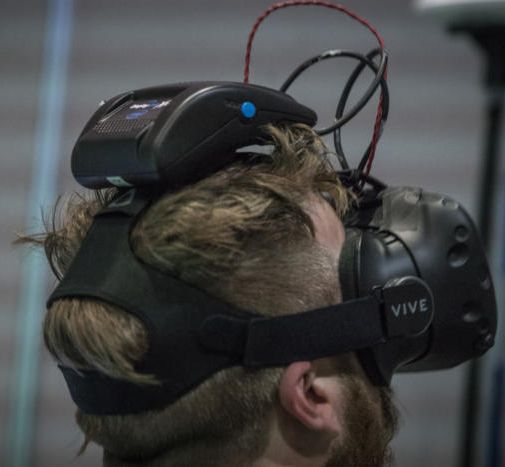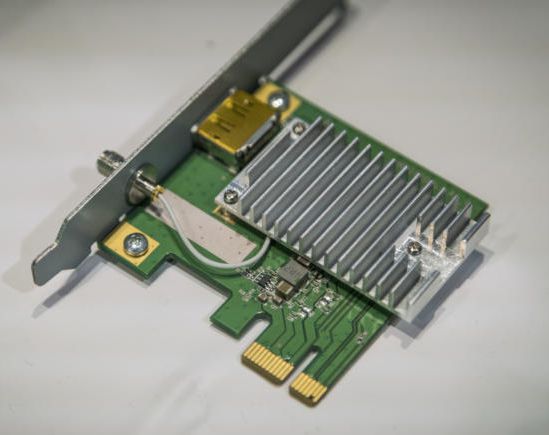OOPS! You forgot to upload swfobject.js ! You must upload this file for your form to work.
The first introduction to the wireless version of the VR-helmet HTC Vive
![]()
|
xtreview is your : Video card - cpu - memory - Hard drive - power supply unit source |
|
|||
|
|
||||
 Recommended : Free unlimited image hosting with image editor
Recommended : Free unlimited image hosting with image editor
|
POSTER: computer news || THE FIRST INTRODUCTION TO THE WIRELESS VERSION OF THE VR-HELMET HTC VIVE |
DATE:2017-06-15 |
|
|
If you believe the previous news , the virtual reality helmets of popular brands will start switching to wireless communication interfaces by the end of the third quarter - at least at the level of prototypes. Intel Corporation has already announced its cooperation with HTC, committed to providing the Vive virtual reality helmet with WiGig's wireless interface support. Colleagues from the site PCWorld managed to test in the prototype helmet HTC Vive, supplemented by a wireless communication module
with a PC. We emphasize that it is too early to draw conclusions about the mass-dimensional characteristics of this accessory, since Intel and HTC unanimously speak about future changes as the prototype becomes a serial product. Now the module with support for the WiGig interface resembles a 3.5 "hard drive, which is attached to the back of the user's head, but is about to move closer to the parietal area." Having such a counterweight with prolonged use causes fatigue of the neck muscles. 
However, it is not necessary to speak about delays in the response of the helmet to the user's actions. According to representatives of Intel, the delay does not exceed 7 ms. This is enough to provide adequate responsiveness in the perception of most users. 
In the system unit, you need to install a WiGig adapter that uses the PCI Express x1 slot. This raises questions of compatibility not only with laptops, but also with game consoles, whose owners, too, would not mind to avoid "cable bondage". Neither the duration of the battery life of this version of HTC Vive, nor the price, nor the timing of its appearance on the market has yet been called. Representatives of Intel only make it clear that the technology of wireless transmission of information can be adapted for other helmets of virtual reality. It all depends only on the pliability of their developers. Related Products : | ||
|
|
||
|
xtreview is your : Video card - cpu - memory - Hard drive - power supply unit source |
|
|
|
|
||
|
Xtreview Support  N-Post:xxxx Xtreview Support        |
THE FIRST INTRODUCTION TO THE WIRELESS VERSION OF THE VR-HELMET HTC VIVE |
| Please Feel Free to write any Comment; Thanks  |
The new version of GPU-Z finally kills the belief in the miracle of Vega transformation (2017-09-08)
The motherboard manufacturer confirms the characteristics of the processors Coffee Lake (2017-09-08)
The Japanese representation of AMD offered monetary compensation to the first buyers of Ryzen Threadripper (2017-09-08)
This year will not be released more than 45 million motherboards (2017-09-08)
TSMC denies the presentation of charges from the antimonopoly authorities (2017-09-08)
Radeon RX Vega 64 at frequencies 1802-1000 MHz updated the record GPUPI 1B (2017-09-08)
Radeon RX Vega 57, 58 and 59: the wonders of transformation (2017-09-07)
The older Skylake processors with a free multiplier are removed from production (2017-09-07)
The fate of Toshiba Memory can be solved to the next environment (2017-09-07)
The European Court sent Intel case on abuses for reconsideration (2017-09-07)
Huawei overtook Apple and became the second largest smartphone manufacturer in the world (2017-09-07)
Twelve-core Core i9-7920X lost the lid in front of the photographic lens (2017-09-06)
In exchange for increasing the stake in the joint venture with Toshiba, Western Digital Corporation is ready to refuse to participate in the auction (2017-09-06)
China banned the creation of new ICO crypto-currency and ordered to return the money for the created one (2017-09-06)
AMD gave details about the history of the Ryzen Threadripper (2017-09-06)
The six-core processor Intel Coffee Lake lit up at a Chinese auction (2017-09-06)
The characteristics of the mobile chip MediaTek Helio P40 are known (2017-09-06)
By the end of the year Toshiba hopes to release a 14TB hard drive (2017-09-06)
Compact systems Intel NUC based on Coffee Lake will be released in the second quarter of 2018 (2017-09-05)
Asustek increases its share in the segment of expensive motherboards (2017-09-05)
![]()
To figure out your best laptops .Welcome to XTreview.com. Here u can find a complete computer hardware guide and laptop rating .More than 500 reviews of modern PC to understand the basic architecture


7600gt review
7600gt is the middle card range.
We already benchmarked this video card and found that ...

 geforce 8800gtx and 8800gts
geforce 8800gtx and 8800gts  Xtreview software download Section
Xtreview software download Section  AMD TURION 64 X2 REVIEW
AMD TURION 64 X2 REVIEW  INTEL PENTIUM D 920 , INTEL PENTIUM D 930
INTEL PENTIUM D 920 , INTEL PENTIUM D 930  6800XT REVIEW
6800XT REVIEW  computer hardware REVIEW
computer hardware REVIEW  INTEL CONROE CORE DUO 2 REVIEW VS AMD AM2
INTEL CONROE CORE DUO 2 REVIEW VS AMD AM2  INTEL PENTIUM D 805 INTEL D805
INTEL PENTIUM D 805 INTEL D805  Free desktop wallpaper
Free desktop wallpaper  online fighting game
online fighting game  Xtreview price comparison center
Xtreview price comparison center Lastest 15 Reviews


Rss Feeds
Last News
- The new version of GPU-Z finally kills the belief in the miracle of Vega transformation
- The motherboard manufacturer confirms the characteristics of the processors Coffee Lake
- We are looking for copper coolers on NVIDIA Volta computing accelerators
- Unofficially about Intels plans to release 300-series chipset
- The Japanese representation of AMD offered monetary compensation to the first buyers of Ryzen Threadripper
- This year will not be released more than 45 million motherboards
- TSMC denies the presentation of charges from the antimonopoly authorities
- Radeon RX Vega 64 at frequencies 1802-1000 MHz updated the record GPUPI 1B
- AMD itself would like to believe that mobile processors Ryzen have already been released
- AMD Vega 20 will find application in accelerating computations
- Pre-orders for new iPhone start next week
- Radeon RX Vega 57, 58 and 59: the wonders of transformation
- ASML starts commercial delivery of EUV-scanners
- The older Skylake processors with a free multiplier are removed from production
- Meizu will release Android-smartphone based on Helio P40
- AMD Bristol Ridge processors are also available in American retail
- The fate of Toshiba Memory can be solved to the next environment
- duo GeForce GTX 1080 Ti in GPUPI 1B at frequencies of 2480-10320 MHz
- New Kentsfield overclocking record up to 5204 MHz
- Lenovo released Android-smartphone K8

HALO 3 HALO 3 - Final Fight!

PREY Prey is something you don t often see anymore: a totally unigue shooter experience.

computer news computer parts review Old Forum Downloads New Forum Login Join Articles terms Hardware blog Sitemap Get Freebies


